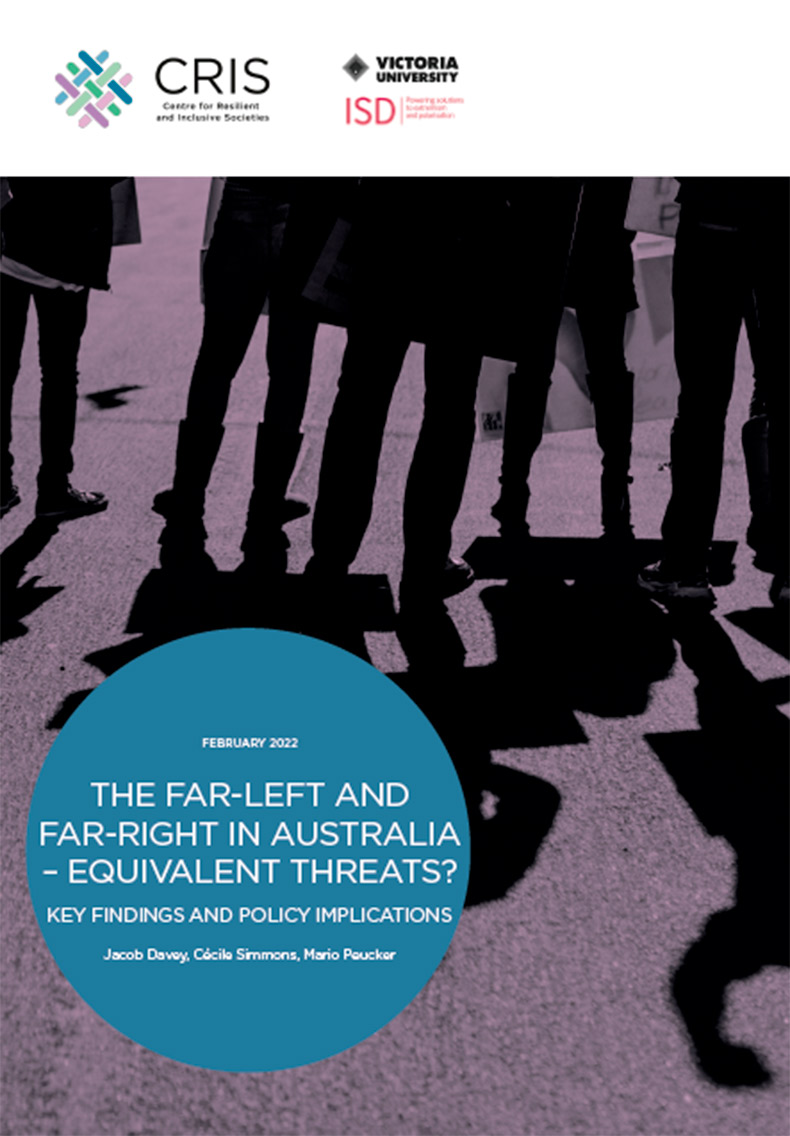The Far-Left and Far-Right in Australia – Equivalent threats? Key Findings and Policy Implications

Authors: Jacob Davey, Cécile Simmons, Mario Peucker
Published: 18 February 2022
The re-emergence of Australia’s far-right in the mid-2010s saw an unprecedented level of online mobilisation and a wave of street protests across the country which were often met with counter-protests by anti-racist and anti-fascist networks, most of them associated with far-left groups. This often resulted in clashes, sometimes violent, between opposed political groups.
Potentially violent threats associated with the far-right and, to a significantly lower degree, far-left mobilisation in Australia have become the subject of growing concern for government- and public authorities in recent years. This demonstrates a shift in understanding of the radical, extremist and terrorist landscape beyond what Australia’s intelligence apparatus now refers to as religiously motivated violent extremism. However, evidence of threats posed by far-left actions remains limited, while the full extent and impact of far-right fringe and extremist activity continues to be investigated by researchers.
The series of reports about the interplay between far-right and far-left actors online in Australia, produced by researchers at ISD and VU as part of their work within CRIS, has aimed to shed light on patterns of far-right and far-left activity on different social media platforms, adding to a growing body of evidence about the nature and relevance of threats posed by fringe political actors in Australia. More specifically, the ISD-VU analysis has sought to gain an evidence-based understanding of the reciprocal dynamics between far-right and far-left actors online.
